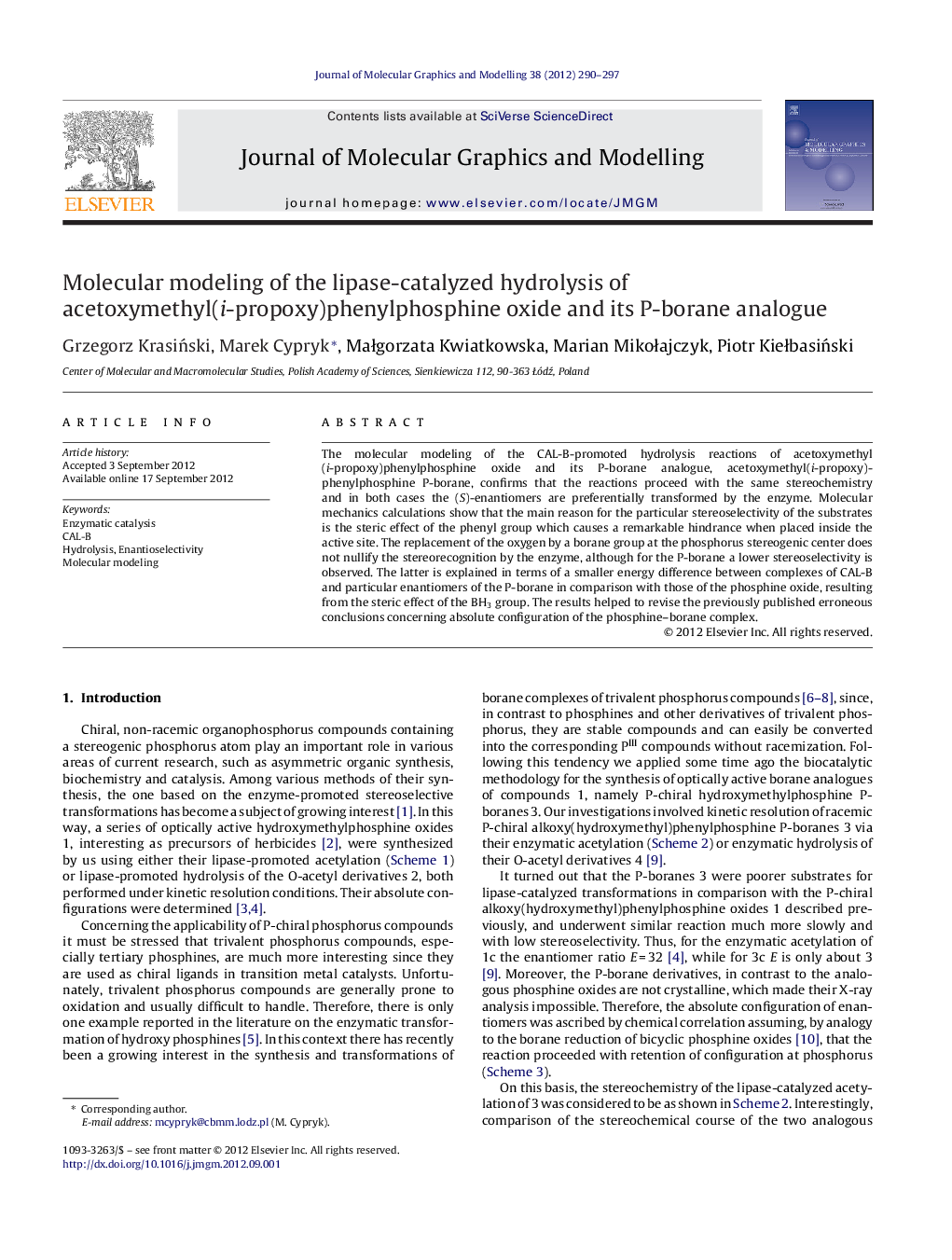| کد مقاله | کد نشریه | سال انتشار | مقاله انگلیسی | نسخه تمام متن |
|---|---|---|---|---|
| 444342 | 692967 | 2012 | 8 صفحه PDF | دانلود رایگان |

The molecular modeling of the CAL-B-promoted hydrolysis reactions of acetoxymethyl(i-propoxy)phenylphosphine oxide and its P-borane analogue, acetoxymethyl(i-propoxy)-phenylphosphine P-borane, confirms that the reactions proceed with the same stereochemistry and in both cases the (S)-enantiomers are preferentially transformed by the enzyme. Molecular mechanics calculations show that the main reason for the particular stereoselectivity of the substrates is the steric effect of the phenyl group which causes a remarkable hindrance when placed inside the active site. The replacement of the oxygen by a borane group at the phosphorus stereogenic center does not nullify the stereorecognition by the enzyme, although for the P-borane a lower stereoselectivity is observed. The latter is explained in terms of a smaller energy difference between complexes of CAL-B and particular enantiomers of the P-borane in comparison with those of the phosphine oxide, resulting from the steric effect of the BH3 group. The results helped to revise the previously published erroneous conclusions concerning absolute configuration of the phosphine–borane complex.
Figure optionsDownload high-quality image (139 K)Download as PowerPoint slideHighlights
► We present the first report dealing with molecular modeling of a lipase-promoted hydrolysis of P-chiral derivatives.
► The molecular modeling of the CAL-B-promoted hydrolysis reactions of hydroxymethylphoshine oxide and its P-borane analogue, was undertaken to explain and compare the stereochemistry of both reactions.
► The results indicate that the replacement of the oxygen by a borane group at the phosphorus stereogenic center does not change the general steric course of the reaction.
Journal: Journal of Molecular Graphics and Modelling - Volume 38, September 2012, Pages 290–297